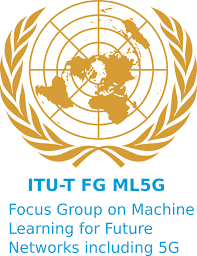
SliceNet has 2 contributions approved by the ITU-T FG-ML5G. The contributions were discussed at the 9th and last meeting of the ITU-T Focus Group on Machine Learning for Future Networks including 5G.
The 2 contributions were approved as ITU-T FG ML5G specifications and are published by the group under the official numbers ML5G-I-247 and ML5G-I-242-R1. The contributions are available to members of ML5G here: extranet.itu.int
SliceNet Contribution 1:
ML5G-I-247 – Machine learning based end-to-end network slice management and orchestration
This document proposes the framework and requirements of machine learning based on end-to-end network slice management and orchestration in multi-domain environments. It addresses the following subjects:
- An overview of machine learning based multi-domain end-to-end network slice management and orchestration.
- Use cases of machine learning based multi-domain end-to-end network slice management and orchestration.
- Functional requirements of machine learning based multi-domain end-to-end network slice management and orchestration.
- Framework of machine learning based multi-domain end-to-end network slice management and orchestration; and lastly examples of test scenarios or results from experimentation.
SliceNet Contribution 2:
ML5G-I-242-R1 – Vertical-assisted Network Slicing Based on a Cognitive Framework
This document proposes a new framework that enables vertical QoE-aware network slice management empowered by machine learning technologies. The specification further proposes a new framework that is able to derive QoE level indications for vertical businesses from QoS parameters and allow feedback from vertical businesses to a network slicing system.
It focuses on this approach and presents technical details especially related to the following aspects:
- Overall architectural design for this approach, network Slice Service User (NSsu; verticals are a part of NSsu) inputs and feedback into the service and corresponding network slicing management system.
- Mapping from the QoE requirements of NSsu to the network slicing QoS configuration by the Network Slice Service Providers (NSsp) and Network Slice Providers (NSp), and
- APIs for data monitoring and actuation to complete this cognitive loop.
Both documents are also part of the references in ML5G-I-255 – Gap Analysis: next steps in integrating machine learning in future networks including IMT-2020, as part of the FG ML5G specifications to be submitted to ITU-T SG13.
